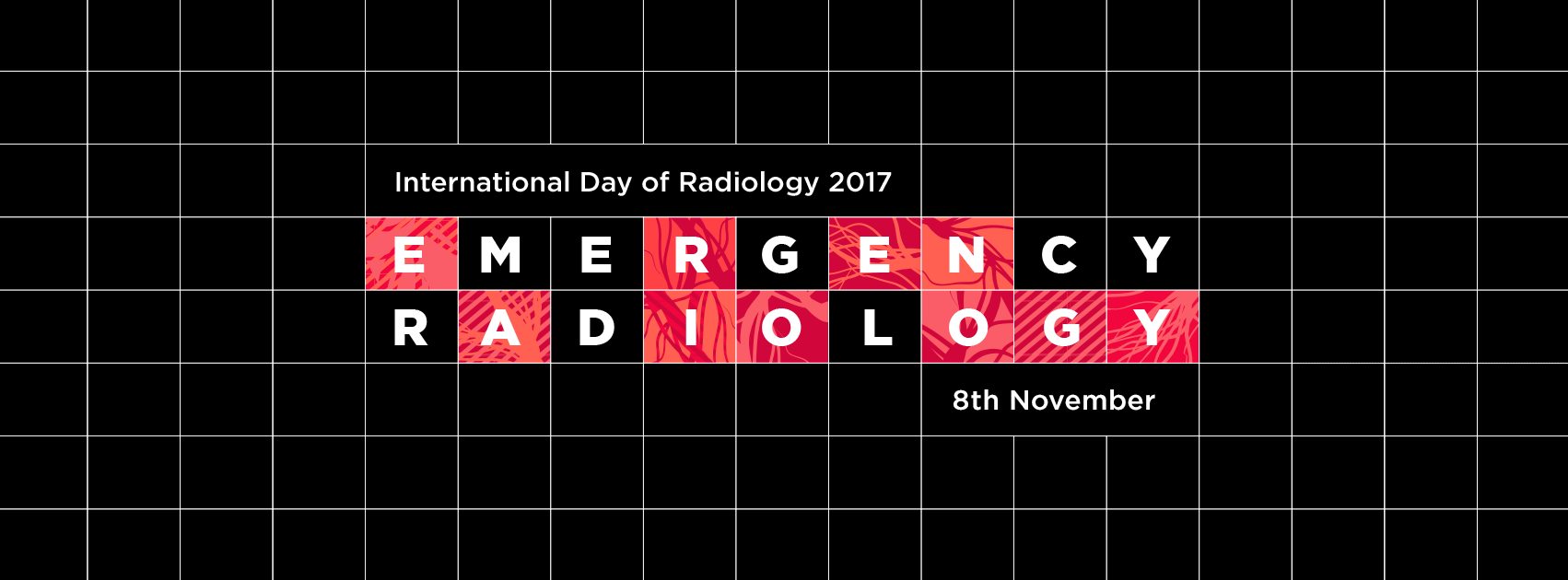Slowly but surely, emergency radiology subspecialisation is being recognised, says Denmark’s first full-time emergency radiologist
This year, the main theme of the International Day of Radiology is emergency radiology. To get some insight into the field, we spoke to Dr. Csaba Traply, head of the emergency department radiology unit and chief emergency radiology consultant at the radiology department of Odense University Hospital in Odense, Denmark.
European Society of Radiology: Could you please describe the role of the radiologist in a typical emergency department in your country?
Csaba Traply: Our emergency department, which opened five years ago, is the first of its kind in Denmark. I was the first Danish radiologist to be employed as a full-time, emergency radiologist.
Together with my younger colleagues (who are in rotation in various radiology subsections, including our emergency section) we are part of a team in the emergency department. Our main focus is to give optimal, expedient examinations and diagnoses to incoming patients. Our goal is for patients to have a preliminary diagnosis within four hours of arriving at the emergency department, no matter what the time of day. In our case, patients usually receive a final diagnosis within this period, thanks to having a radiology unit physically located in the emergency department and available around the clock.
In other hospitals in Denmark, similar emergency departments have just been established. Unfortunately, not all of these will include an on-site radiology unit, and among those that do, not all will have an on-site radiologist.
Personally, I cannot imagine emergency radiology without the constant, physical presence of a radiologist, as the condition and required diagnostics for emergency patients can change rapidly. Therefore, I think that our presence and participation as part of the emergency team is essential.

Dr. Csaba Traply is head of the radiology unit in the emergency department and chief consultant in emergency radiology at the radiology department at Odense University Hospital in Odense, Denmark.
ESR: What does a typical day in the emergency department look like for a radiologist?
CT: In the early morning, only few new patients arrive. At around 10:00, the number of patients starts to increase, and the number of visitors peaks between 14:00–20:00. I think that this is a universal pattern in all emergency departments. Naturally, the workload follows this timeline.
Every morning begins by reporting examinations from the previous night, as well as visitation of the previous referrals and the beginning of new examinations. In the meantime, examinations of the newly arriving patients also commence.
ESR: Teamwork is crucial in an emergency department. How is this accomplished in your department and who is involved?
CT: As I already mentioned, in our emergency department, there is an on-site radiology unit with an on-site radiologist and technicians. We are an active part of the team, and in many cases, we are guiding clinicians to choose the appropriate examinations, and often our report influences patients’ treatment. This happens through direct communication and collaboration with the clinicians, often before our final report is released. So far, this works well and is a model in emergency medicine in Denmark. This is why I find it difficult to imagine that examinations take place in the emergency department, but the reporting takes place outside the emergency department.
If necessary, we cooperate and consult with the other subsections in our radiology department (e.g. neuroradiology, thoracic and abdominal radiology).
ESR: How satisfied are you with the workflow and your role in your department? How do you think it could be improved?
CT: I am very satisfied with our achievements during the past five years. The communication and teamwork is great between radiologists and emergency physicians, and our collaboration with the radiological subsections also is successful.
Slowly but surely, the emergency radiology subspecialisation is being recognised.
One improvement might be being able to report plain films around the clock. Unfortunately, with our present routine, we can’t do that after 15:00. Having an extra CT scanner and MRI on site would also be an improvement, as we only have one CT scanner at the moment.
ESR: Which modalities are used for different emergencies? Could you please give an overview sorted by modalities?
CT: Our emergency department radiology unit can provide conventional x-rays (e.g. chest x-rays and extremity examinations). We also do ultrasound examinations, except for thyroid and carotid duplex examinations. Ultrasound is also used for different interventions, such as drainages).
We can cover all kinds of CT examinations, except cardiology CT. On-site fluoroscopy is also available.
In many cases, various modalities are combined during the diagnosis of emergency patients.
General and neuroradiological interventions, such as embolisation and stenting, are also available, but these take place in the main radiology department located 200–300m from the emergency department.
MRI is not on site but is also available in the radiology department at all hours.
ESR: Is teleradiology an issue in emergency radiology? If yes, how so, and how often is it used?
CT: In our ER we have continuous reporting coverage, so teleradiology is not an issue.
During night shifts, we can contact radiology subspecialists, such as interventional radiologists, at home, where they have access to images using the picture archiving and communication system (PACS).
Of course, we have regional coverage at remote hospitals in special cases when we are asked for a second opinion. In those cases, images examinations are shared through our PACS for viewing.
ESR: Are emergency radiologists active anywhere other than emergency departments? Do they have other non-emergency roles, or other emergency roles in other departments?
CT: At our hospital, I am the only emergency radiologist who is occupied with emergency cases in the emergency department. Of course, there are the younger radiology residents on rotation in the emergency department’s radiology unit during their training. Other consultants are also involved during night shifts in the emergency department. Our radiology section also covers all radiology examinations, using all modalities, throughout hospital during night shifts.
ESR: Do you have direct contact with patients and if yes, what does it entail?
CT: We have direct contact with patients during ultrasound examinations and during all interventional and fluoroscopy examinations. In some cases, we talk with patients who have suspected broken bones when there are discrepancies between the referrals and the patients’ actual symptoms. In those cases, technicians might ask for a radiologist’s help to talk to and examine the patient for more clarification.
ESR: How are radiologists in your country trained in emergency radiology? Is emergency radiology a recognised specialty in your country?
CT: In Denmark, there is no specific education in emergency radiology. Generally, specialisation in radiology requires five years, which includes a two-year period at a university hospital.
There are no subspecialties in radiology, but after two to three years training in a subspecialty, one can become recognised as a subspecialist. This is most common at university hospitals.
Emergency radiology is a new subspecialty, which is just emerging in Denmark. Hopefully, as more emergency departments open in Denmark, emergency radiology will become more recognised as a subspecialty.
Dr. Csaba Traply is head of the radiology unit in the emergency department and chief consultant in emergency radiology at the radiology department at Odense University Hospital in Odense, Denmark. He earned his medical degree in Hungary and in 2009, he specialised in radiology in Denmark.
The emergency department in Odense was first established five years ago as the first of its kind in Denmark. From the beginning, Dr. Traply led the radiology section in the emergency department. He is likely the only full-time emergency radiologist in Denmark. He has special interest in emergency and trauma radiology and since 2010, has been a member of the Nordic Forum of Trauma and Emergency Radiology (NORDTER). He is a regular visitor of NORDTER and the American Society of Emergency Radiology (ASER), and has Nordic and other international affiliations.
He has given numerous invited lectures for physicians and radiographic technicians at national meetings about the role of radiology in the emergency department.
Read our interviews with expert emergency radiologists from 29 different countries here.



This is the toughest job but Radiologists are generally prepared to adopt the changes in the profession to deliver the service that patients expect and medical progress requires.